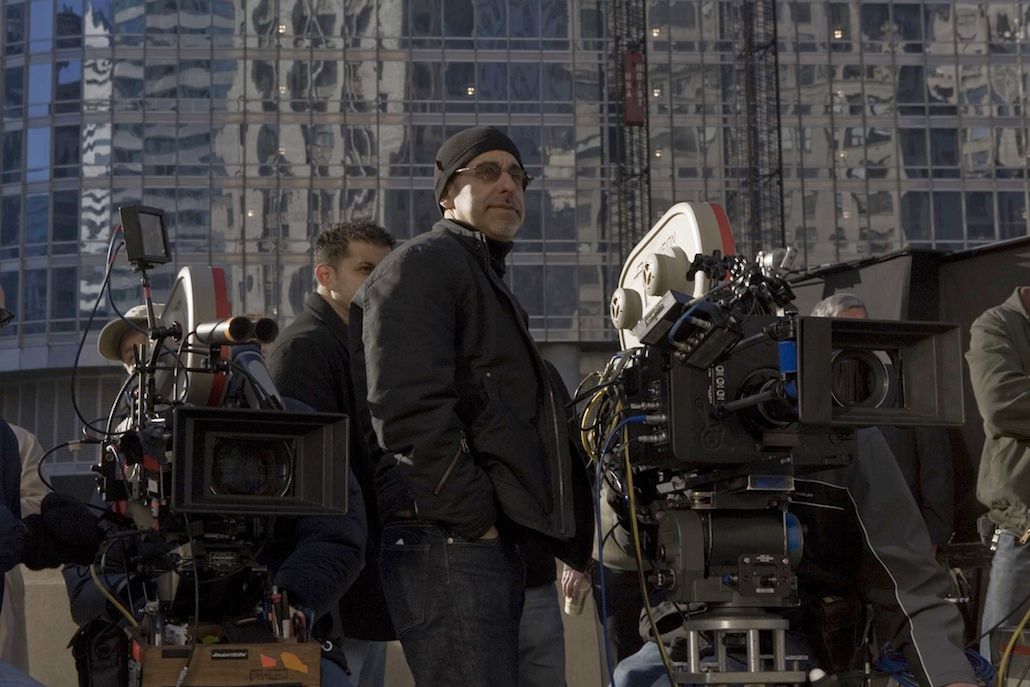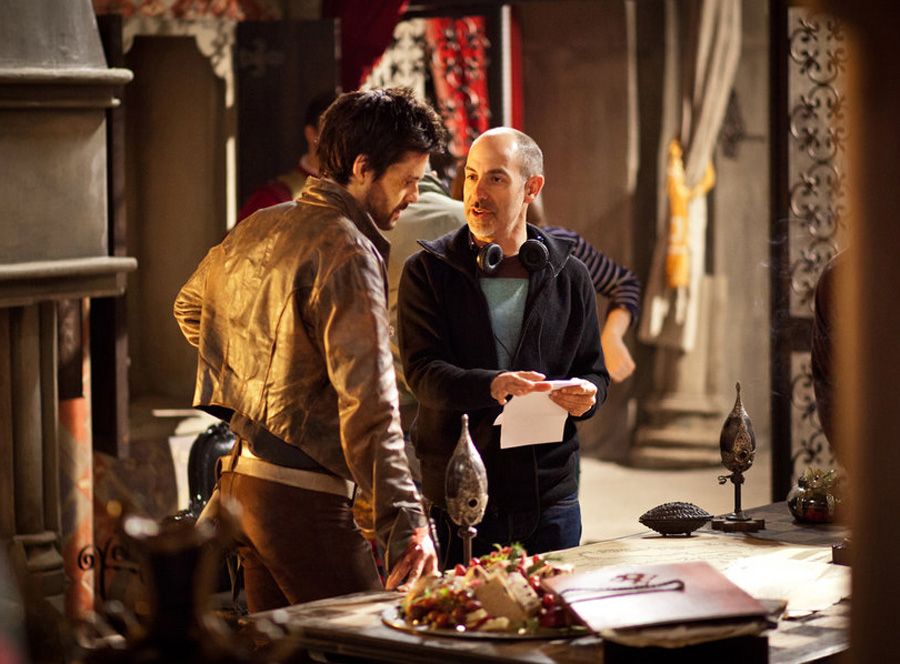As the writer who helped to adapt The Crow, Blade, Batman, Ghost Rider and Superman for the big screen, David S. Goyer has given a lot of thought to the level of responsibility a storyteller has to source material that, in some cases, is truly iconic. But given the secrecy surrounding much of his work, it’s not always possible to discuss the thought process behind those adaptations.
But at the recent Los Angeles press day for Da Vinci’s Demons, which returns Saturday for its second season on Starz, Goyer touched on the ongoing relationship between filmmakers and fans, source material and the medium for which it’s being adapted. While the writer, director and showrunner couldn’t talk specifically about, say, his upcoming work on the Man of Steel sequel, he offered some insights into his feelings about filmmakers taking on cultural touchstones, fan theories, and the challenge of giving audiences “what they don’t even know they want.”
Spinoff Online: As I was asking [Da Vinci’s Demons star] Tom Riley about fan reactions and things like that, one of the things he said was you can’t necessarily put too much stock into just sort of fan response to things.
David S. Goyer: Or Internet chatter, because you’re dealing with an incredibly vocal but incredibly tiny sort of [group]. That’s a mistake that I think a lot of sometimes networks and movie studios make is sort of listening too much to [them]. I mean, it’s important to listen to the fan chatter but you’re really talking about a tiny, tiny, tiny portion of your audience that may not be representative of what your mainstream audience actually thinks or feels.
How do you determine then what is worth listening to?
Well, you listen. We’re aware and then you have to kind of gauge that against your own gut feeling. You have to do a gut check and see what you think.
Well, there are always going to be a myriad of fan theories about how something should have been, or would have been. And sometimes it seems like creators are sometimes are so close to something that to take the step back that fans have might provide a perspective that would actually benefit them. Have you found that to be the case?
I mean, I don’t read everything that’s out there. I wouldn’t have the time. But we’re aware of some of it, yeah, and it would be silly not to be. I think it’s helpful, but at the same time, it’s also, and I’m paraphrasing Steve Jobs, it’s like you don’t give the audience or the consumer what they want, you give them what they don’t even know they want. I mean, being involved in some of these comic book movies and stuff like that, people say, well, this is what they should do. And trust me, if we had just done exactly that I don’t think the audiences would have been completely happy. I mean that’s not to say that filmmakers can’t misfire, but if you try to just do what you think the fan community wants you’ll drive yourself crazy and you won’t actually write anything. So it’s good to have that tension, but I think also some creators pay attention to it too much.
Well then, how do you define where your authorship of a property or a character ends, and that fan ownership begins? Using, just for example, Star Trek, people felt like the second movie was ostensibly a betrayal of the identities of those characters. You don’t have to talk about that movie, but —
No, but what I’ll just say is it’s different when you’re dealing with something either A, that you created from whole cloth or B, something like Leonardo Da Vinci where, yes, there are preconceived notions but not any preexisting real iterations of it. So it’s different when you’re dealing with something that has become a cultural touchstone like a Batman or Star Trek. And I think when you’re dealing with something like that that has been a cultural touchstone for decades you do have a responsibility to at least be aware of what the weight of all those decades of kind of fan reaction have been. And so Chris Nolan and I absolutely had discussions about that with regards to Superman or Batman and where he exists in the public consciousness and whether or not this was aligned with that or a betrayal of that or not. And sometimes you say, “Yeah, maybe this is different,” and you go for it. And sometimes you’re celebrated for and sometimes you’re not. And then sometimes you say no, this is the way it’s been and this is what we should do. I mean, I will say that when you’re dealing with something that is a cultural touchstone I always think it’s important to look at what are the elements or themes that are the most sticky, that bubble to the surface again and again over the decades. And those are probably the ones you should pay attention to.



